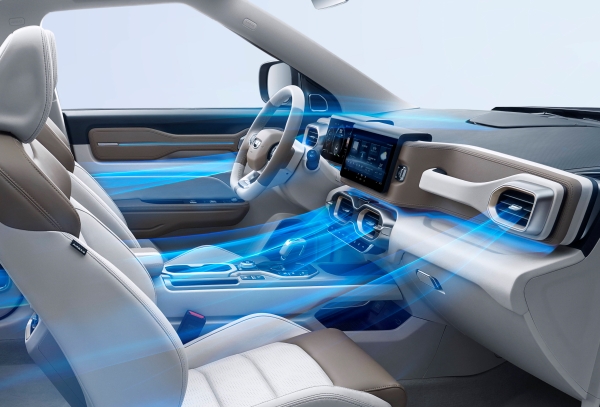What Are the Reasons Why the Car Air Conditioning Compressor Does Not Work?

The malfunction of an automotive air conditioning compressor can be attributed to various factors including electrical system issues, mechanical failures, refrigeration system problems, and other external factors. Below is a detailed analysis of potential causes and corresponding solutions:

1.Electrical System Issues
A. Blown Fuse
– Cause: A blown fuse may result from circuit overload or short circuits, which interrupts the power supply to the compressor.
– Solution: Inspect the vehicle’s fuse box for any blown fuses related to the air conditioning compressor. Replace with a fuse of identical specification if necessary.
B. Relay Failure
– Cause: Faulty relay coils or poor contact points can disrupt the proper operation of the compressor control circuit.
– Solution: Utilize a multimeter to measure the coil resistance and check the on/off status of the relay contacts. Replace the relay if any faults are detected.
C. Electromagnetic Clutch Failure
– Cause: Short-circuits, disconnections, or wear in the electromagnetic clutch coil can prevent normal engagement, rendering the compressor inoperable.
– Solution: Verify that the resistance of the electromagnetic clutch coil falls within the specified range and inspect the clutch plate for wear. Replace the electromagnetic clutch if issues are identified.
D. Temperature Sensor Malfunction
– Cause: An inaccurate temperature sensor may send erroneous signals to the air conditioning control unit, leading it to incorrectly assume the vehicle’s interior has reached the set temperature, thus stopping the compressor.
– Solution: Measure the resistance of the temperature sensor at various temperatures using a multimeter and compare readings to standard values. Replace the sensor if significant deviations are observed.
E. Air Conditioning Control Unit Failure
– Cause: Internal circuit malfunctions or software errors in the control unit can impede its ability to issue correct commands to the compressor.
– Solution: Employ professional diagnostic tools to read fault codes from the control unit. Perform repairs as indicated by the fault codes, replacing the control unit if required.
2. Mechanical Failures
A. Internal Compressor Damage
– Cause: Long-term use, insufficient lubrication, or contaminants in the refrigerant can cause wear, jamming, or damage to internal components such as pistons, connecting rods, and bearings.
– Solution: Disassemble the compressor to inspect internal parts. Replace damaged components or consider replacing the entire compressor if damage is extensive.
B. Drive Belt Problems
– Cause: Loose, broken, or excessively worn belts can hinder effective power transmission to the compressor, preventing it from functioning properly.
– Solution: Examine belt tension and wear. Adjust tension or replace the belt as needed.
3. Refrigeration System Issues
A. Insufficient or Leaking Refrigerant
– Cause: Leaks in the refrigeration system’s piping, joints, or seals can lead to insufficient refrigerant levels. Low pressure triggers the compressor protection mechanism, halting operation.
– Solution: Use specialized leak detection equipment to locate leaks, repair them, and then replenish the refrigerant to appropriate levels.
B. System Blockage
– Cause: Expansion valves, desiccant bottles, or pipelines may become blocked by impurities or moisture, disrupting refrigerant circulation and affecting compressor performance.
– Solution: Clean or replace blocked components. Consider cleaning the entire refrigeration system if necessary.
C. Pressure Switch Failure
– Cause: The pressure switch monitors refrigeration system pressure. Abnormal pressure levels can trigger the switch to cut off the compressor circuit. A faulty pressure switch may cause false operations.
– Solution: Assess the pressure switch’s operational status and performance. Use pressure testing equipment to verify the switch’s action pressure. Replace the switch if faults are detected.
4. Other Factors
A. High Engine Load
– Cause: Under high load conditions, the vehicle’s control system may temporarily disable the air conditioning compressor to prioritize engine performance.
– Solution: Avoid prolonged periods of high engine load. Wait for the load to decrease before attempting to activate the air conditioner.
B. Low Ambient Temperature
– Cause: Some automotive air conditioning systems restrict compressor operation at low ambient temperatures to protect the compressor and cooling system.
– Solution: This is a standard protective feature. No special treatment is typically required; wait for ambient temperatures to rise before using the system.

